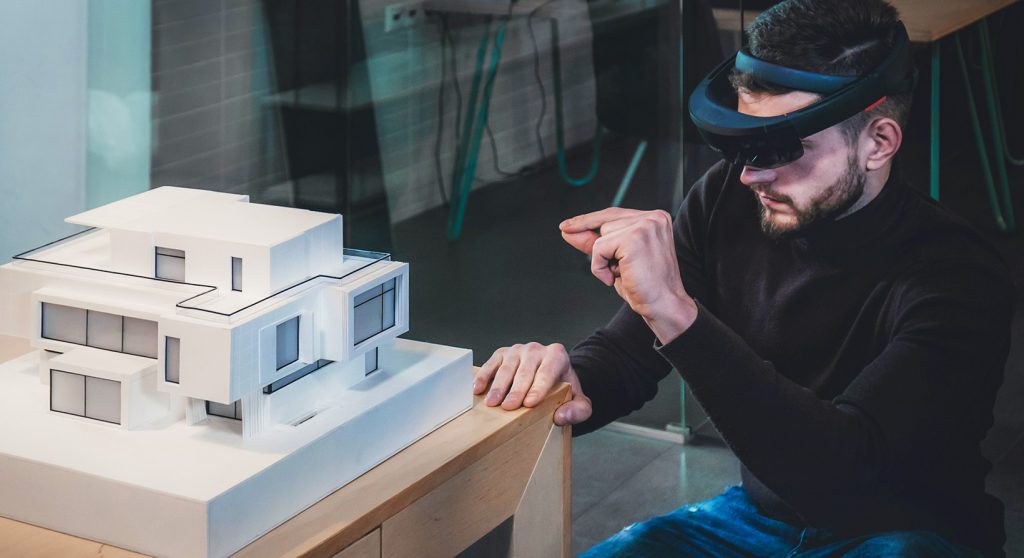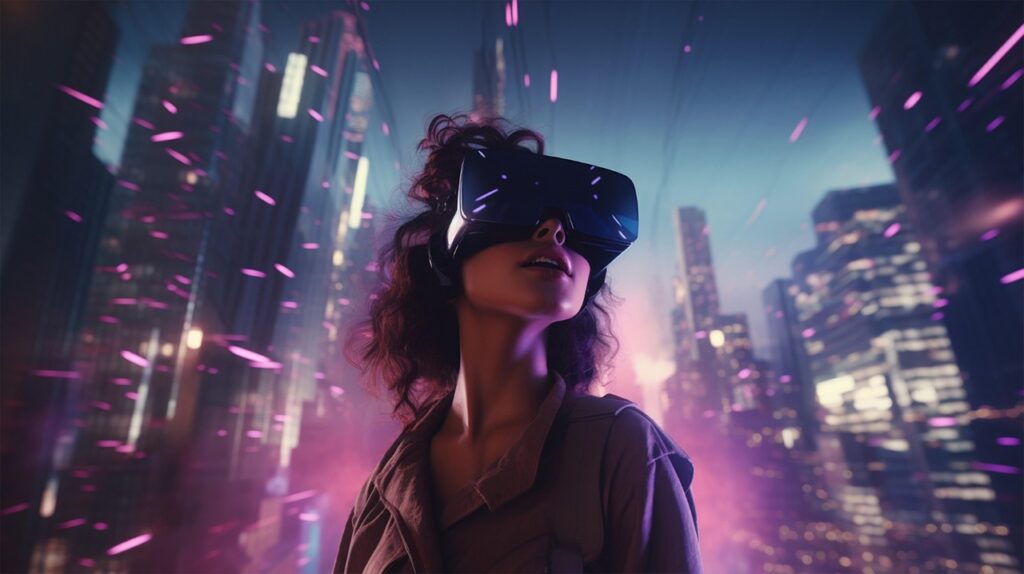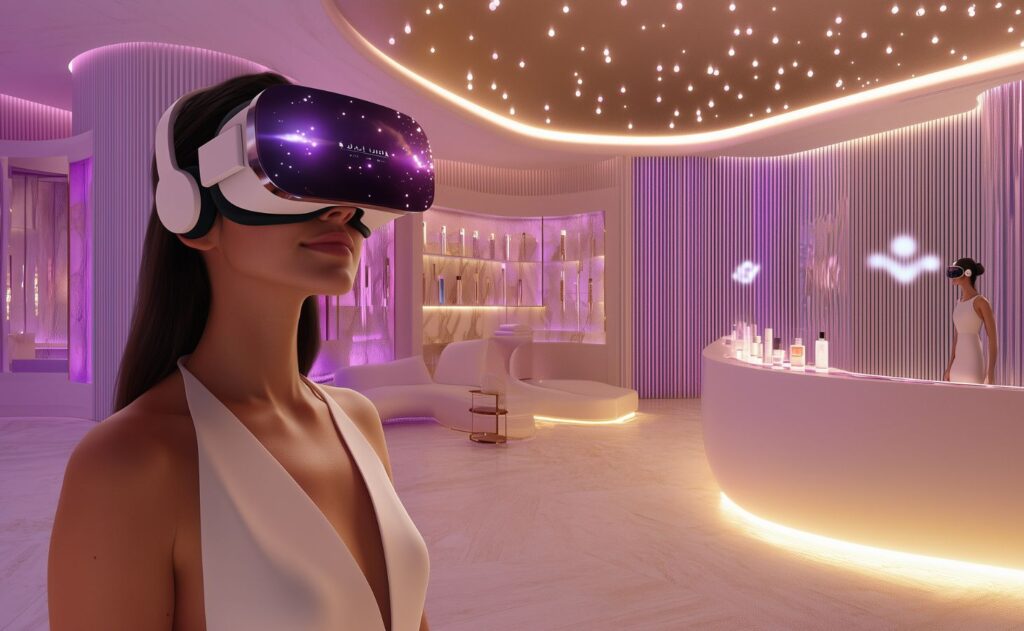XR technologies are transforming how we approach real estate and architecture by making it easier for architects and developers to produce appealing designs that satisfy customer requirements. A recent survey positioned Real Estate fourth in a list of sectors expected to attract the most VR/AR-related investment over the next 12 months. It has been estimated that the Virtual Reality (VR) market in real estate alone could generate as much as $2.6 billion by 2025.
These sizeable financial investments prove Virtual and Augmented reality’s immense potential in the real estate and architecture industry. The technology makes the overall real estate process more efficient, accessible, and engaging for buyers and sellers alike. Similarly, integrating VR and AR in the field of architecture can result in a more effective design methodology, enhanced teamwork among colleagues, and a heightened perception and comprehensive picture of the building being designed.
Let’s explore more about how VR and AR improve the real estate and architecture industry!
1. Virtual real estate saves time and money
According to CEO of Landlord Studio, Charles Chan, virtual and augmented reality could significantly benefit real estate agents by saving time, particularly for properties located in remote or far-off areas. 1.4 million real estate agents are already using VR technology, which is constantly growing. With VR, the agents can have a comprehensive 3D view of each room without needing to schedule physical open houses or travel to foreign countries to view properties. This feature gives them much more time to acquire new clients and maintain relationships with current ones. Besides time, it also saves money for both customers and agents. Customers save on transportation costs to destinations that aren’t in their vicinity, and realtors save on physical open house expenses. Also, multiple potential clients can tour the estate in VR at one time. And each of them can view a differently furnished version.

Augmented reality real estate can also save a ton of money for realtors. There are many ways to utilize AR for real estates, such as marketing or branding, but the feature that attracts the most customers is virtual staging. This exciting feature is used to create virtual versions of furniture and decor that can be placed inside a property to give potential buyers an idea of how the space could look when it is furnished. It saves a lot of resources for the realtors since they don’t need to rent out or buy expensive furniture to showcase their property. They can use AR, which offers many more possibilities and customizes customers’ wants and needs.
One of the best examples of this is Ikea’s AR-based app which enabled their customers to visualize how different furniture and decor styles would look on a property. This renowned Swedish furniture company has reported an increase of higher than 50% in engagement and conversion rates through their AR-based app, Ikea Place. The app allows users to see how furniture would appear in their room before buying, resulting in improved sales and reduced returns and exchanges. Furthermore, Home Depot, a major furniture company in the US, has also reported that customers who use augmented reality to preview furniture before purchasing are up to three times more likely to convert than those who do not.
Want to learn more about augmented reality apps? Click here.
2. Virtual reality real estate offers a global reach
With the adoption of VR, realtors can significantly enhance productivity. VR allows them to expand their client reach, leading to more inquiries and potential sales to buyers. By leveraging VR, realtors can offer immersive and interactive property tours, which saves time, and provides a convenient way to showcase properties to interested clients who want to know what is virtual real estate. Overall, the use of VR by realtors can streamline their workflow, increase efficiency, and lead to higher sales and better client satisfaction.
Because of this, virtual reality (VR) is poised to become a significant player in the real estate industry. The overwhelming majority of buyers, 77%, would prefer a VR property tour to a physical one. Additionally, 68% are keen on using VR technology to visualize furniture placement, while 84% prefer video footage for property previews. Finally, 62% of buyers choose a real estate agent who uses VR technology.
3. Virtual reality training reduces and improves onboarding time
Education and training in the architecture, engineering, and construction (AEC) industry could be transformed by the progress in AR and VR technology. When VR is used in training, learners can retain up to 80% of the material one year after exercise, as opposed to only 20% after one week of traditional training.
The use of AR and VR in education and training can enable architects and other AEC professionals to visualize and interact with designs in a realistic and immersive way, allowing them to make more informed decisions and better understand the implications of their design choices. Furthermore, using VR technology in training can provide a more realistic and engaging learning experience, allowing professionals to better understand a space’s functionality and usability before it is constructed.
VR training can be an effective tool for improving the safety performance of construction professionals and workers. A study has shown a 39% increase in identifying hazards and a 44% improvement in managing risks among construction professionals and workers.
Curious about training in virtual reality? Take a look at this.
4. VR architecture builds emotional connections and offers an instant sense of ownership
Compared to traditional 2D images, virtual reality architecture, similar to augmented reality architecture, provide a more immersive experience for the user since it enables them to explore and interact with a location or space. The use of 360-degree imagery and other multimedia elements, such as videos and audio, help to create a sense of presence and allows the user to visualize themselves in the space, thereby facilitating an emotional connection with the virtual real estate.
The ability to navigate and interact with a virtual tour space can help users develop a more in-depth understanding and appreciation of the location, design, and layout. Research shows that 56% of buyers said AR gives them more confidence about the product quality, and 61% say they prefer to buy when the venue offers AR experiences.
Looking for an immersive real estate or architecture idea? Contact us!
👋 get in touch
By clicking the “send” button, I agree to the collection and processing of my personal data as described in the Privacy Policy.




